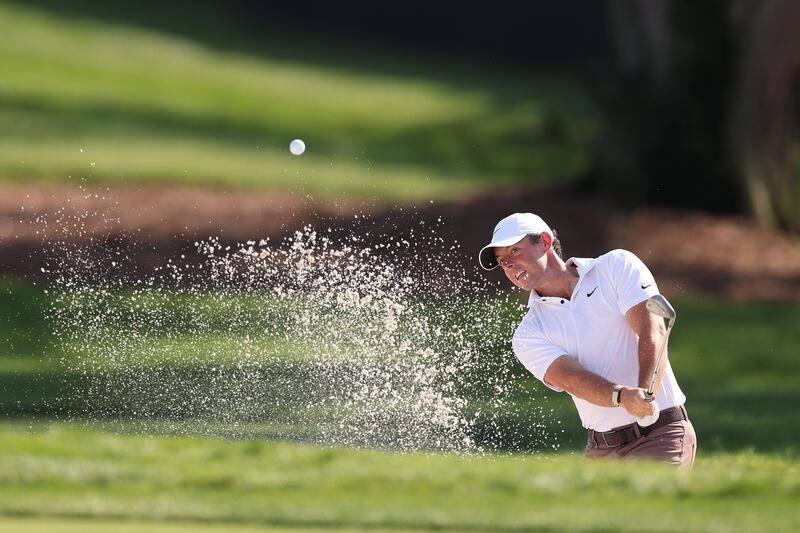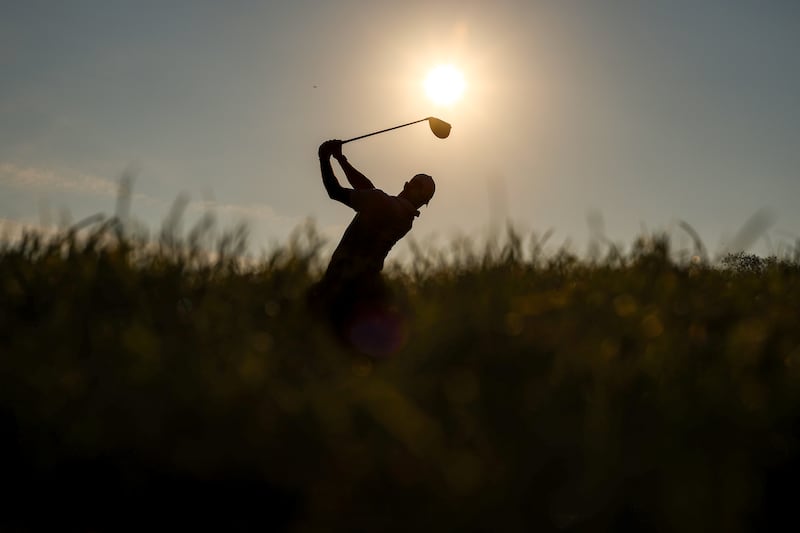The Netflix golf thing is fine. Full Swing – a title so bland it could only have come after spending a year in the company of professional golfers – is eight episodes of behind-the-scenes footage from the PGA Tour, fewer than half of which make you want to drill wooden tees into your eyes. That’s not a bad score at all, relative to the usual par for this kind of enterprise.
The Brooks Koepka episode is brilliant. They could have thrown everything else out and just made it feature-length and they’d have had one of the great sports documentaries on their hands. How often do you get to watch an elite performer lose his gift in real time? This is that. Never mind golf – if you are into sport at all it’s unmissable.
Of the rest of it, the Joel Dahmen episode is a lot of fun and some of the Tony Finau stuff is affecting. Ian Poulter is himself, which might not sound like much of a recommendation but it’s very watchable all the same. The rest of it is all fairly meh, apart from the opening episode with Jordan Spieth and Justin Thomas, which is a crime against light.
The Rory McIlroy episode is clearly bolted onto the end. The producers have been up front about the fact that McIlroy only came on board towards the end of the season – they were with him for the Tour Championship, which he duly won. But other than a playground jibe at Phil Mickelson and his eyes lighting up at a text from Tiger Woods, let’s just say he didn’t give much in the way of memeable content.
READ MORE
Thing is, the McIlroy who appears in the series isn’t just McIlroy the golfer. It isn’t even mostly McIlroy the golfer. The whole series is suffused with the fight that went on throughout 2022 over the future of pro golf. The breakaway LIV Tour, the PGA Tour’s response, the corralling of the troops by the leading names in the game, led by McIlroy and Woods. So the Rory we get is part-time union rep, part-time golfer.
Probably the most interesting scene catches him munching on a salad with a tour official after his opening round at East Lake. The previous day Tour Commissioner Jay Monahan had outlined changes for 2023, including so-called “elevated events”, played for $20 million purses. “Our top players have committed to playing in all 12 elevated events,” Monahan said.

Not so fast there, Jay. “There’s been a lot of blowback on that from the guys in the room,” McIlroy tells tour official Andy Pazder over lunch the next day, with the Netflix guys hovering a couple of feet away. “They were kind of blindsided by that. That’s sort of the feeling. We knew we were going to have elevated events but we don’t know anything about them being mandatory. I told them yesterday, ‘If I’m willing to do this, so should you be.’ No other athletes in the world get to choose when and where they play. We’ve all gotten a little soft.”
Well now. Spin the tape on – the real-life one rather than the Netflix one – and when the first elevated event of 2023 came around in January, McIlroy was the only top player missing from the field. Somewhere along the way the players had prevailed upon the tour to allow them one week each a season where they could decide not to turn up at an elevated event. McIlroy cashed in his voucher at the earliest opportunity and skipped the Tournament of Champions in Hawaii.
Spin it on further again and the changes for 2024 that have been widely leaked this week are a bonanza for Rory and friends. Not only has the idea of mandatory play been wiped away completely, a chunk of the elevated events that they do play will now be restricted to just 70 entrants and have no cut. With McIlroy to the fore, the best players in the game have secured for themselves a future where they play for far more cash than before, with no obligation to turn up and with everyone guaranteed to play on the weekend. That’s Shop Steward of the Year stuff, right there.

But what of McIlroy the golfer? All the way through 2022 his day job never suffered. Short of winning a Major it was up there with any season in his decade-and-a-half on tour. And when he won in Dubai to kick off 2023 it capped off a run of eight top-10s in a row, including two wins and seven finishes of fourth or better. He was number one in the world again. There was no sense that all the off-course stuff had hurt his golf.
The past month back on US soil has been a different story. In McIlroy’s three February tournaments gravity has had its way. He has had six rounds of 70-plus, which is as many as he had in the previous six months. After all the fuss earlier in the week there was a small irony in the fact that McIlroy got to the turn in Bay Hill yesterday just one shot inside the cutline. He fought manfully on the back nine and made the weekend with a battling 69. But it was all a bit of a grind for much of the way. Far from the flowing, shimmering McIlroy of last year.
There’s no need to panic, clearly. The Masters starts in 33 days and McIlroy has finished in the top-10 at Augusta in seven of the past 10 runnings. In plenty of those years he was in far worse early-season shape than he is just now. He’s no lover of the Players Championship and hasn’t done well in the Matchplay since 2016, but even so he could turn up to Augusta on crutches and you’d half fancy him to get in the mix.
The problem will come if he doesn’t. A mediocre Masters is when the questions will start. Was it worth it, Rory? All that time and energy, all that fuss. And for what, ultimately? To make already rich golfers even richer? To fluff the pillows and turn down the quilts of some of the most comfortable sportspeople on the planet? For all the gargantuan sums involved, it will suddenly seem like small enough beer.
The stakes for the coming month couldn’t be higher.

















